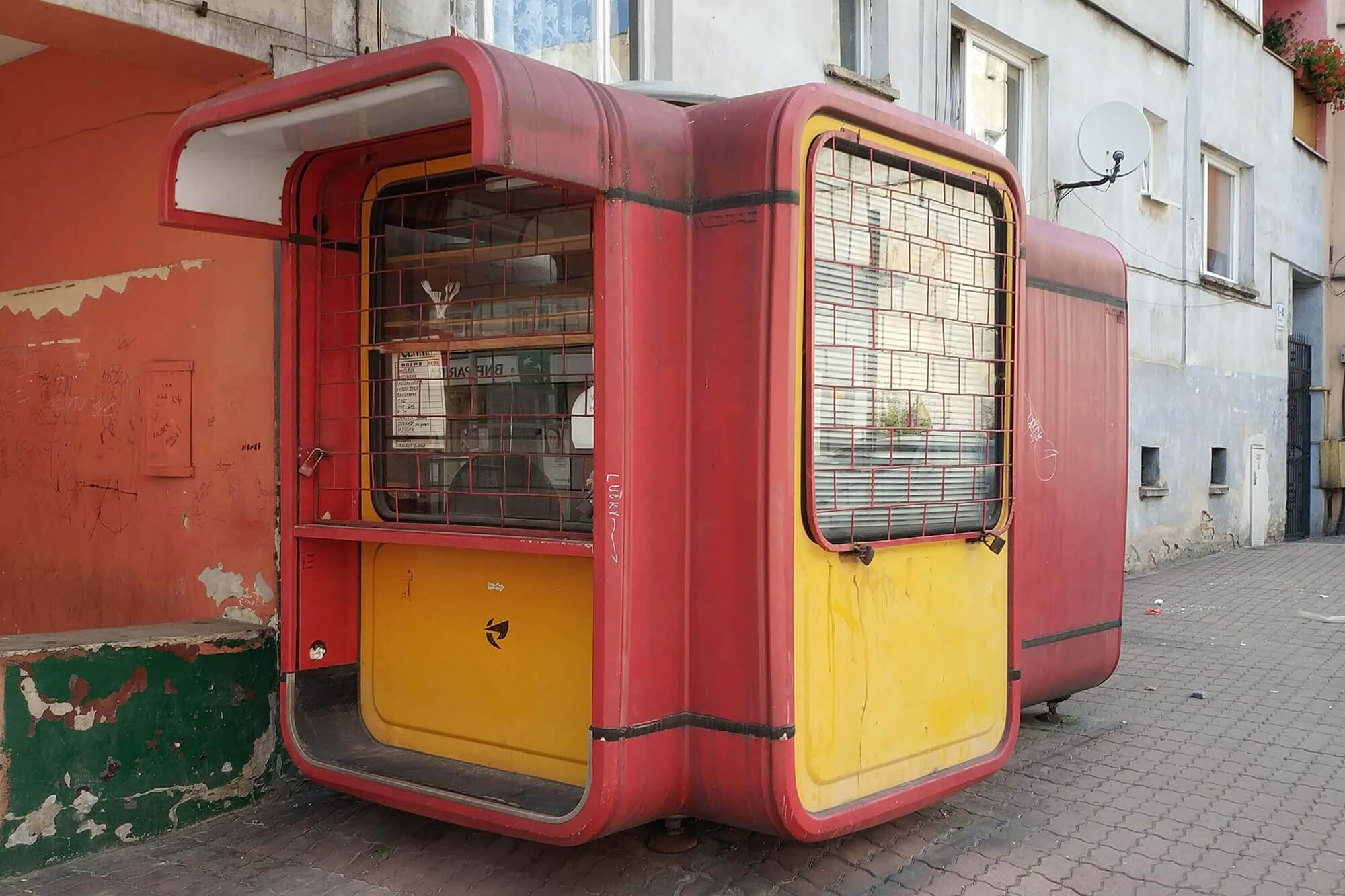
Interview with John and Duncan on our ‘Kiosk of the Future’ competition winning proposal
Apr 28, 2022
John and Duncan were interviewed by competition organisers, Outsider magazine, about our interest in the competition and how the proposal fits into wider themes in our work.
The published interview is available here (in Slovenian).
Why did you participate with your idea on competition to rethink the future of the kiosk?
Competition entries allow Neighbourhood to explore potential applications for wider ideas that we have about place, society and the environment. The Kiosk competition was an opportunity to give shape to discussions related to the importance of small daily social connections and street-level activity in the face of the growth in online retail and consumption, and the resulting social isolation and loneliness of those that are less connected. However, in a time of climate crisis, we also believe that we have a responsibility to think very carefully before committing material resources to new structures and that balancing social and environmental impacts is the primary challenge of our time.
Here, as well as consuming resources, we recognised that a traditional design approach might inadvertently create street clutter, permanently privatise public space and recreate an outmoded model with the potential for obsolescence.
What is your vision for future of kiosks? What did you want to show with your submission to the competition?
We feel that the most important role kiosks play is in the facilitation of the multiple small daily face-to-face exchanges that bring people together. If, by overlaying existing infrastructure with a clear visual identity and utilising technology, that opportunity to generate those physical connections could be opened up to a greater number of providers, we believe that the social benefits could be powerful. Every citizen would have access to participating on either side of this small-scale exchange. For providers, the flexibility and extremely low barrier to entry would allow for ideas to be tested at almost zero risk, resources to be shared and micro-businesses nurtured.
Are there any recent similar competitions or projects, either locally or internationally, which have caught your attention?
We are inspired by work which explores re-use and circular principles at various scales. Ikea’s new Rëhoøk modular kitchen range brings ease of disassembly to the mass-market in a way that buildings might one day. At the other extreme, Foster and Partners’ scheme for SHVO to refit William Pereira’s Transamerica Pyramid in San Francisco is an important case study in the reuse of complex existing buildings where many would consider total demolition the easier option. In Japan, the amazing Kamikatsu Zero Waste Centre by Hiroshi Nakamura is largely constructed from waste materials and elevates the act of recycling to a connective social activity.
You are also architects with your own architectural praxis. What would you describe as your main focus? Can you show us one of your realisations?
Although we are engaged in architecture, we consider ourselves to be developers – with numerous built projects delivered by our team in various ways. Having come together as Neighbourhood, our work has focussed on combining our skills and interests on projects through which we can explore our potential for positive impact. Recent competition work has included Grow-Rise, a commended entry in collaboration with Morris+Company, to the ‘Low Rise: Housing Ideas for Los Angeles’ competition, and ‘Front to Front’, runner up in Liverpool’s ‘Townhouse for the Future’ competition.
In your opinion, what is (or should be) the main topic in architecture today? How do you respond to this topic?
The areas in which we believe we can make important contributions are both environmental and social, but these are often spoken about as separate things. Instead, we subscribe to Kate Raworth’s ‘Donut Economics’ concept that connects the two and demonstrate how we need to exist as a society within planetary limits. An exploration of this concept is present in all of our work.
What architectural media do you follow, where do you see the importance of architectural media?
We follow the British architectural press, along with global online publications and social media. It feels critical to engage with ideas from everywhere and by everyone rather than to exist within siloed cultures each working independently to find solutions to global issues. It is through various media that these connections are made.
Do you read printed magazines and newspapers or (only) online?
Our engagement with the press is now almost entirely online and often access through social media channels.